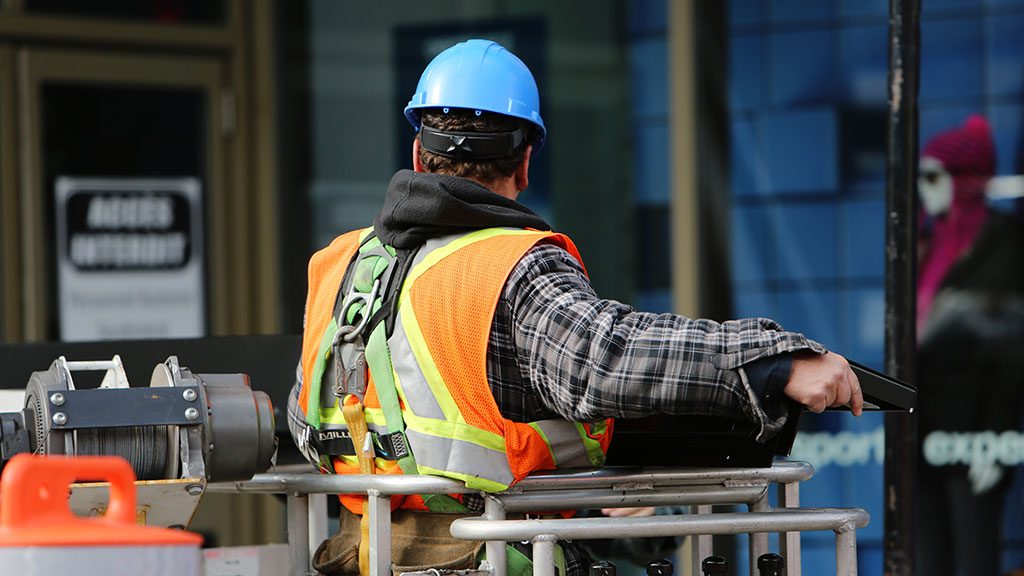The Ontario College of Trades (OCOT) is ramping up compliance and enforcement efforts in the construction sector to coincide with increased projects during the spring and summer months, but one industry stakeholder is wondering what took so long.
Inspections will be consistent with the College’s new Compliance and Enforcement Policy, explained George Gritziotis, OCOT’s registrar and CEO, adding the College has equipped its officers with enhanced training and tools to ensure they are able to deliver more targeted, consistent and transparent inspections.
“This is our first push out into this kind of activity under the new regime and the new policy,” he said.
“There will be a purposeful and focused effort on the underground economy and a focused effort at identifying workers that are vulnerable and the potential of risk of harm is high. The risk of harm piece, that is different, and that is consistent with what came out of the Tony Dean review. Risk of harm is one of the key areas we need to consider when we’re making visits.”
The International Brotherhood of Electrical Workers — Construction Council of Ontario (IBEW–CCO) reacted to the OCOT announcement saying it comes more than a year after the College approved the new policy.
John Grimshaw, executive secretary treasurer of the IBEW–CCO, said according to the Ontario College of Trades and Apprenticeship Act (2009), work in the electrical trade is only ever supposed to be done by qualified electricians or registered apprentices and the council has approached the College in the past asking them to enforce the act as written.
“They say now that they’re going to go out and start enforcing it in the construction industry and as far as I’m concerned, I will believe it when I see it,” Grimshaw stated.
“It’s got nothing to do with union versus non-union, it’s got to do with people doing compulsory trades that are not licensed in those compulsory trades and are not registered apprentices. That flies in the face of the law.
“The Ontario College of Trades and Apprenticeship Act is very clear on who is supposed to do compulsory trade work and who employers are supposed to use when they are performing that type of work, and yet there is another agenda to undermine that.”
Gritziotis explained there has already been a lot of work underway, aiming to strengthen the industry.
“It’s been a busy transition year for the compliance and enforcement team,” he said. “A new policy was developed consistent with the Dean recommendations, an implementation plan put in place, officers were trained on compliance approaches and new enforcement tools, a risk of harm index is under development, and we are working with the regulator community to share information. All this, while our officers were in the field visiting thousands of workplaces.”
He said targeted inspections will be supported by information exchanges with other regulators to assist in the identification of potential higher-risk workplaces and sites.
The College will dedicate 14 officers to the construction sector over the next couple of months, specifically those that have a Certificate of Qualification or experience in construction.
“It’s our ability to find that (underground economy) activity through our relationships with other regulators, past data that we’ve collected here and any information sharing we have with other regulators,” said Gritziotis.
“A lot of people refer to enforcement, but it’s compliance and enforcement and an important part for me is when we make these targeted inspections, that we consider the education awareness and training component of what we’re doing.
“Where we see folks that egregiously ignore the act and there is risk of harm present, the enforcement side kicks in. But we want to be very measured and smart in how we do this.”
Officers will also assist with the educational component of compliance and enforcement, including providing information about the functions of the College.
“When you find an unregistered worker you need to educate them and let them know there are mechanisms through the College to have whatever skills they’ve had assessed to get on the road towards apprenticeship,” Gritziotis noted, adding statistical data will be collected to inform future compliance and enforcement work and help the College focus its efforts strategically.
“As we gather information, we will be looking closely at refining as we go and also help inform down the road. It’s really wanting to work on our regulatory staging ground so we can all do our work better.”




As a former Provincial Coordinator of Construction Health and Safety(retired), this reads like many other unfulfilled promises by OCOT and the government. Serious enforcement has not been a priority and OCOT has in the past focused on collecting fees instead of carrying out their enforcement mandate. Fourteen enforcement officers in an industry employing up to 450,000 workers is not a serious attempt at enforcement. I hope OCOT will be open and share their enforcement statistics after thisinitiative, as it seems to be very little and too late at first read.
I have been wondering what has been taking so long also, enforcement of the compulsory trades is what all skilled trade members of OCOT have been asking for since, OCOT’s inception. My membership OCOT means nothing if no one is preventing un-skilled workers from preforming work in the compulsory trades.